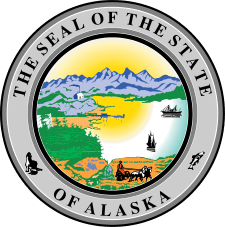Mount Griggs
| Mount Griggs | |
|---|---|
 NW view from west rim of Katmai caldera, July 1990 | |
| Highest point | |
| Elevation | 7,602 ft (2,317 m) [1] |
| Prominence | 7,300 ft (2,200 m) |
| Listing | |
| Coordinates | 58°21′26″N 155°06′13″W / 58.3572°N 155.1037°WCoordinates: 58°21′26″N 155°06′13″W / 58.3572°N 155.1037°W [2] |
| Geography | |
 Mount Griggs Alaska | |
| Location | Katmai National Park and Preserve, Lake and Peninsula Borough, Alaska, U.S. |
| Parent range | Aleutian Range |
| Topo map | USGS Mount Katmai B-4 |
| Geology | |
| Mountain type | Stratovolcano |
| Volcanic arc/belt | Aleutian Arc |
| Last eruption | 1790 BCE ± 40 years |
Mount Griggs, formerly known as Knife Peak Volcano, is a stratovolcano, which lies 10 km behind the volcanic arc defined by other Katmai group volcanoes. Although no historic eruptions have been reported from Mount Griggs, vigorously active fumaroles persist in a summit crater and along the upper southwest flank. The fumaroles on the southwest flank are the hottest, and some of the flank fumaroles can roar so loudly that they can be heard from the valley floor.[1] The slopes of Mount Griggs are heavily mantled by fallout from the 1912 eruption of Novarupta volcano.[3]
The mountain was named for Dr. Robert Fiske Griggs (1881–1962), botanist, whose explorations of the area, after the eruption of Mount Katmai in 1912, led to the creation of Katmai National Monument by President Woodrow Wilson in 1918.[4]

See also
- List of mountain peaks of North America
- List of Ultras of the United States
- List of volcanoes in the United States
References
- 1 2 "Griggs". Global Volcanism Program. Smithsonian Institution. Retrieved 2010-03-30.
- ↑ "Griggs". Alaska Volcano Observatory. Retrieved 2010-03-30.
- ↑ "Volcanoes of the Alaska Peninsula and Aleutian Islands-Selected Photographs - Album". U.S. Geological Survey. Retrieved 2010-03-30.
- ↑ "Mount Griggs". Geographic Names Information System. United States Geological Survey. Retrieved 2010-03-30.
